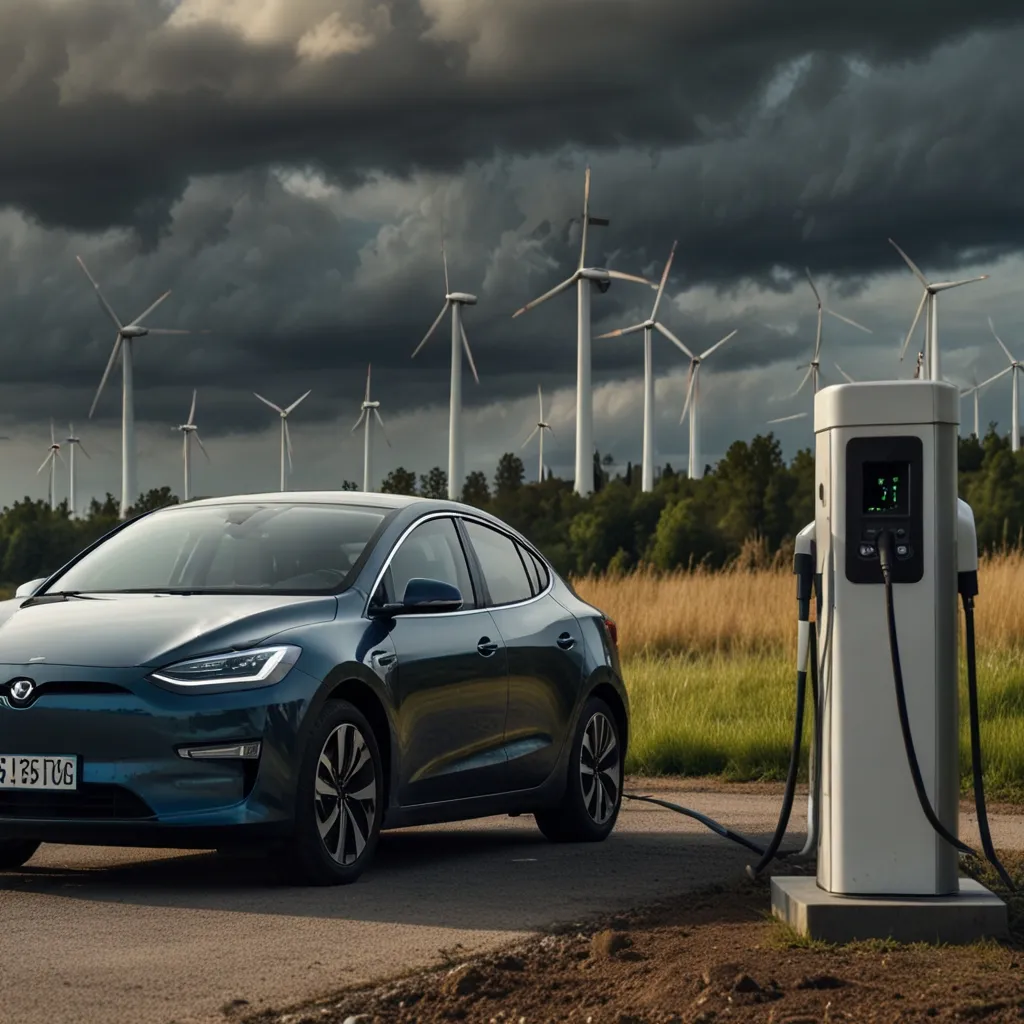On the surface, it’s easy to think electric vehicles (EVs) are greener simply because they don’t emit exhaust fumes like gasoline-powered cars. Without burning fossil fuels, they don’t produce carbon dioxide, nitrogen oxides, or unburned hydrocarbons. EVs don’t even have tailpipes! However, the story doesn’t end there. To truly understand their environmental impact, we have to consider the entire lifecycle, from electricity consumption to manufacturing processes.
Let’s remember that electricity, used to charge EVs, often generates greenhouse gases depending on the energy source. Additionally, manufacturing the batteries and components of EVs also requires significant energy and resources. This raises the question: Could the production emissions of EVs offset the savings from not burning gasoline?
Globally, about 70 million new cars are sold each year, with only around 9% being electric. Despite their growing popularity, electric vehicles still represent a small fraction of the total cars on the road—only about 1.4%. Most vehicles remain gasoline or diesel-powered.
Gasoline cars pollute due to their internal combustion engines, which produce power through energy derived from burning fuel. This process inherently leads to greenhouse gas emissions, primarily carbon dioxide. Gasoline engines are also inefficient, with only about 20-35% of the energy from fuel actually propelling the car. On the other hand, electric vehicles convert 75-85% of their electrical energy into movement.
To compare emissions, a gasoline car produces roughly 202 grams of CO2 per kilometer, whereas an EV, taking the source of electricity into account, averages 83 gCO2 per kilometer. This represents a noticeable saving of 119 grams of CO2 per kilometer in favor of EVs. But this figure varies; in countries like Iceland, this number is close to zero because they use renewable energy, while in coal-dependent countries like India, it’s much higher.
Manufacturing EVs, particularly their batteries, is energy-intensive. Producing an electric vehicle emits around 10 tons of CO2, compared to 7 tons for a gasoline car, mostly due to battery production. This means EVs start their lifecycle with a larger carbon footprint but offset this through lower emissions during their use.
By some calculations, an EV breaks even in terms of CO2 emissions after about 25,210 kilometers (15,665 miles). This varies by region; in the U.S., where people drive more, the break-even point comes faster compared to countries with lower annual mileage.
Over their lifetimes, most EVs are greener, but there are exceptions. In particular, countries heavily dependent on coal for electricity, like India, Estonia, Poland, Czechia, and Bulgaria, currently see less benefit from EVs. However, this is expected to improve as these nations shift to greener energy sources in the next decade or two.
One issue not yet fully addressed is the recycling of EV batteries. Unlike car batteries, which have a high recycling rate, lithium-ion batteries from EVs are currently recycled at a much lower rate. This poses a future environmental challenge as more EVs reach the end of their life.
In summary, while EVs aren’t a perfect solution, they generally offer a significant reduction in greenhouse gas emissions over their lifetime, especially as global electricity generation becomes greener. Manufacturers and governments will need to address issues like battery recycling and raw material supply to ensure the long-term sustainability of electric vehicles.






